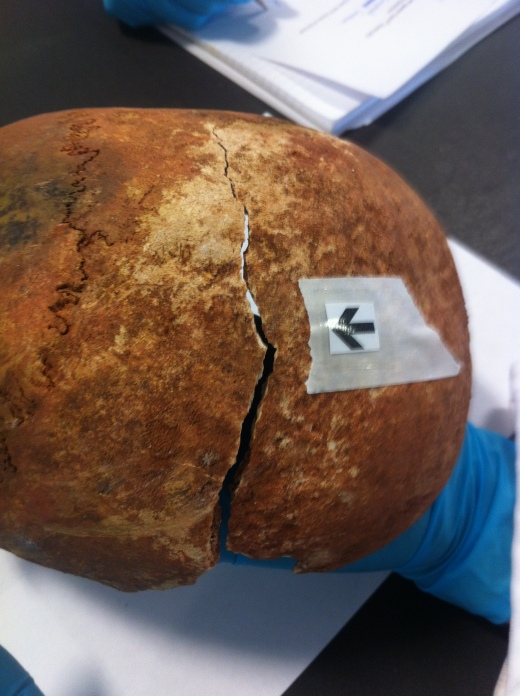There is a relatively easy way to see whether a fracture to a skeleton is ante, peri or even post mortem. It is essential to detail and deduce which category a fracture falls into, as this is very important to see whether the fracture had played a part in the person’s death.
To first classify a fracture, we need to understand what the different categories mean. Some of you will already know these terminology, but here’s a quick reminder;
- If a fracture is ante-mortem, it means that the fracture was made before death of the persons.
- With peri-mortem fractures, it means that the fracture was received at or near the time of death of the persons – so could have been the fatal strike.
- Post-mortem fractures are fractures that have been received after death, so during the time from death to the time of recovery. These fractures are usually from excavation processes, dismemberment, or even natural processes (soil, animal and plant activity).
You will be able to determine if a bone fracture was ante-mortem due to there being signs of healing which is shown by cell regrowth and repair.
With peri-mortem fractures, the person died before the healing started to take place, but the fractures will still contain the biomechanics that are present in ante-mortem fractures.
Post-mortem breaks tend to shatter compared to peri-mortem breaks which splinter, this is because bones which are in the post-mortem stage tend to be dry and rather brittle. Another big indicator of a fracture being post-mortem is the difference in colour.
The ‘Quick Tip’ that my applied anthropology lecturer taught me on how to easily distinguish between peri-mortem and post-mortem is to look at the fracture and decide; is it a clean break, as if you were breaking in half a bar of chocolate? If it is, then the fracture is most likely to be a peri-mortem fracture. If the break looks crumbly, like breaking a biscuit in half, it’s post-mortem fracture. Obviously this tip is not the most scientific, but it’s an easy way to begin your distinguishing process.

Skull with signs of post-mortem fractures. This photo is from a practical lab session.
If you look at the photo above it illustrates a post-mortem fracture. You can determine this easily due to the colour difference on the edge of the fracture, where it is a much lighter colour compared to the rest of the skull and the crumbly nature of the cut.
References:
Most of this is my own knowledge that I learnt during my degree in my anthropology lectures/lab practical sessions. But if you’re looking for a published journal check the one below. It is very informative and easy to understand if you’re a beginner in the world of anthropology/archaeology! It also highlights some problems that can arise when distinguishing trauma, it’s really interesting!
Smith, A.C. 2010. Distinguishing Between Antemortem, Perimortem, and Postmortem Trauma. Academia.edu. Available from here in .pdf form!

Pingback: Quick Tips: Fracture Types – The Basics. | All Things AAFS!
Pingback: Mystery Of Thirty Nine Skulls Discovered At London Wall Finally Solved. | All Things AAFS!
Reblogged this on jessijoybean and commented:
This is super helpful! I finally understand!